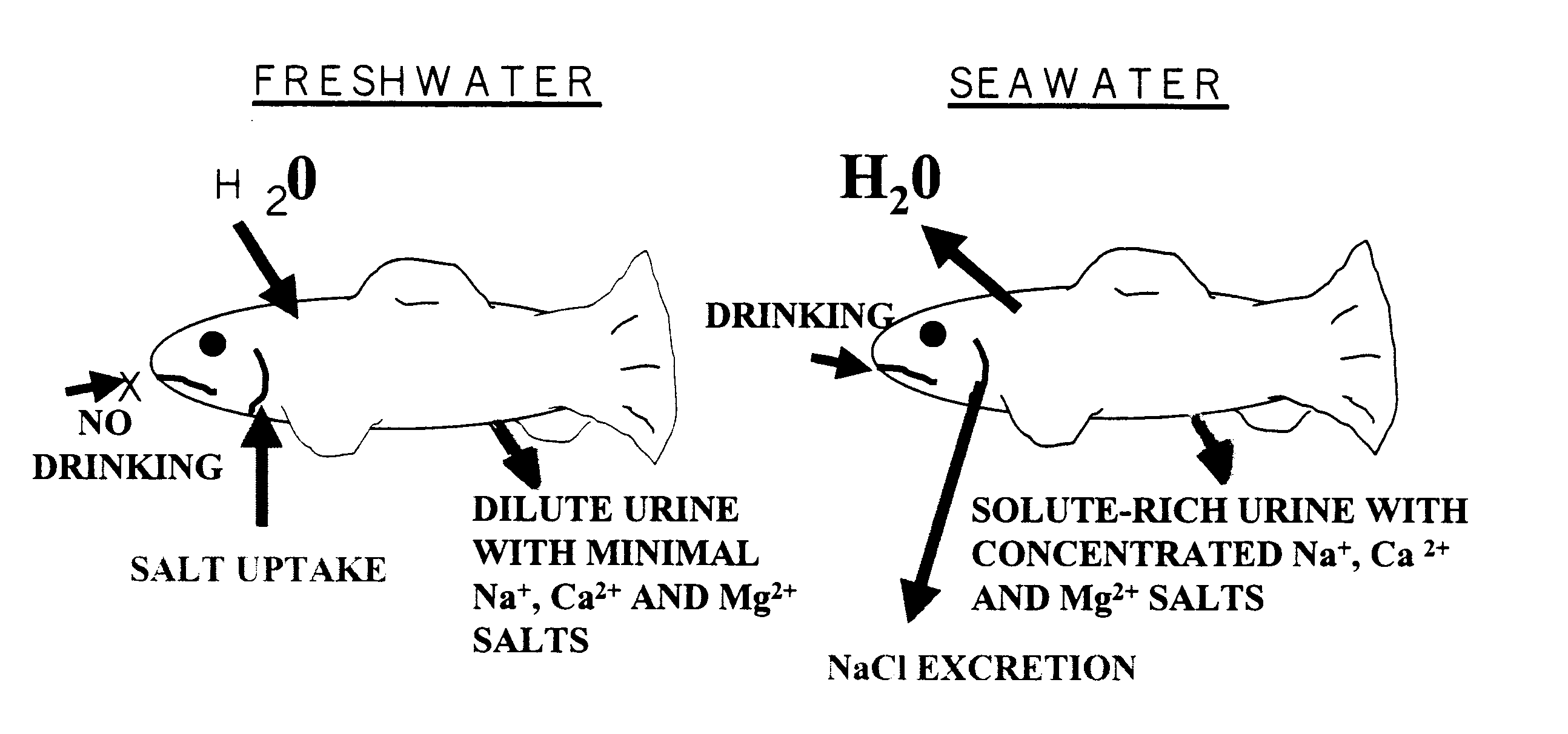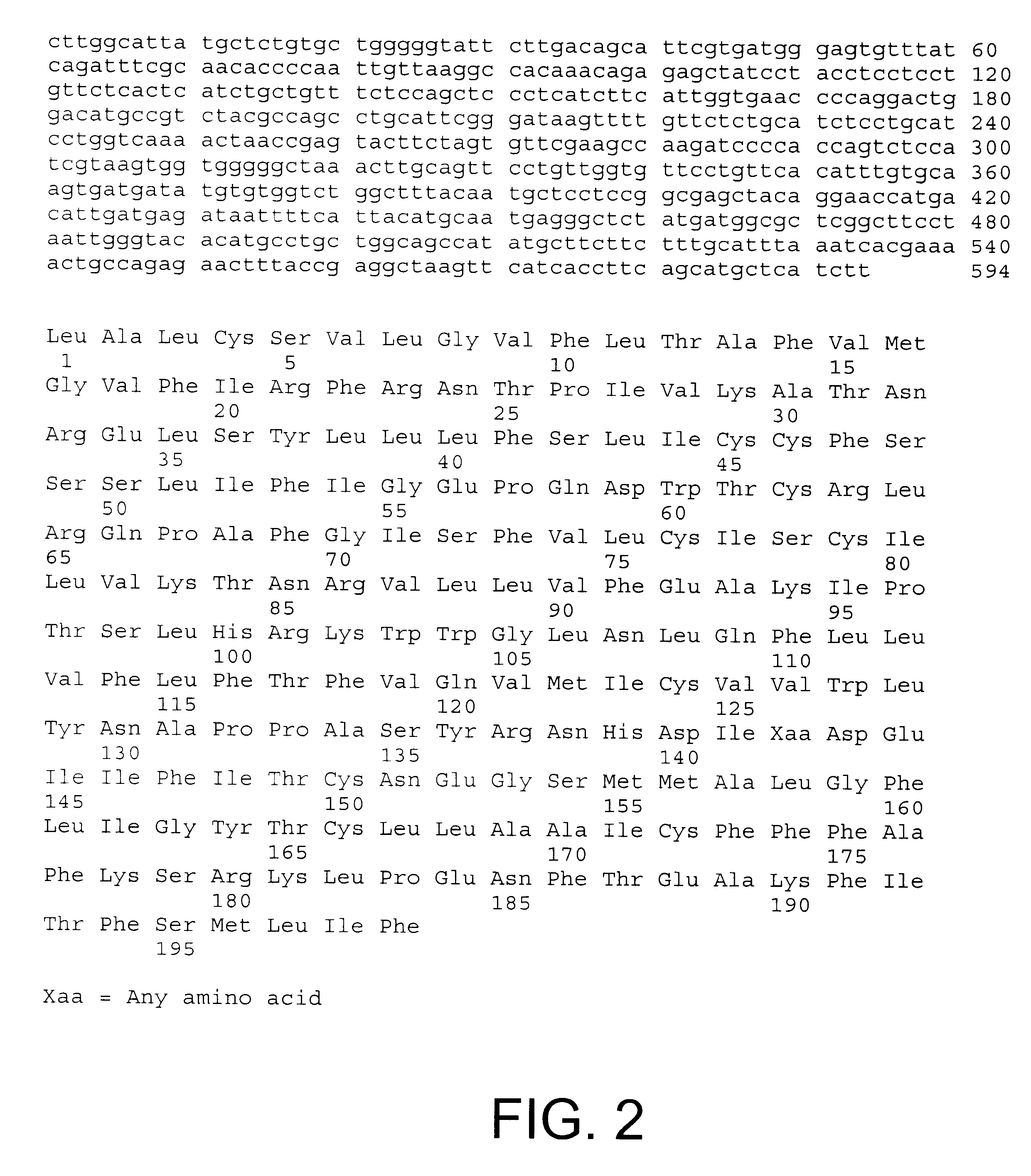Methods for raising pre-adult anadromous fish
a technology for anadromous fish and preadults, which is applied in the field of methods for raising preadult anadromous fish, can solve the problems of difficult to pinpoint, difficult to raise these types of fish, and significant morbidity and mortality in hatcheries, and achieve the effect of expanding the possible number of sites
- Summary
- Abstract
- Description
- Claims
- Application Information
AI Technical Summary
Benefits of technology
Problems solved by technology
Method used
Image
Examples
example 4
Exposure of Trout Fingerlings to Ca2+ and Mg2+ Increases Expression of PVCRs
Development of specific ion transport capabilities in epithelial cells of gill, kidney and intestinal tissues are important to survival of pre-adult anadromous fish if they are to survive transfer to seawater. To determine if alterations in the PVCRs accompanied the increase in trout fingerling survival in seawater, immunoblotting and immunocytochemistry was performed on samples from the fingerlings as was done for the salmon smolt tissues. The results are shown in FIGS. 15, 16 and 19.
FIG. 15 is an immunoblot of intestinal tissue from trout fingerlings. Anti-CaR antiserum identifies multiple bands that are specific for PVCR staining as determined by comparison of immune (lane marked CaR) vs. preimmune (lane marked pre-immune). Prominent among these bands includes a broad band of 120-160 kDa, together with larger molecular weight complexes present above these bands from both intestine and gill tissue.
FIGS. 16...
example 5
Immunolocalization of Polyvalent Cation Receptor (PVCR) in Mucous Cells of Epidermis and in the Brain of Salmon
The skin surface of salmonids is extremely important as a barrier to prevent water gain or loss depending whether the fish is located in fresh or seawater. Thus, the presence of PVCR proteins in selected cells of the fish's epidermal layer would be able to "sense" the salinity of the surrounding water as it flowed past and provide for the opportunity for continuous remodeling of the salmonid's skin based on the composition of the water where it is located.
Methods: Samples of the skin from juvenile Atlantic Salmon resident in seawater for overl2 days were fixed in 3% paraformaldehyde dissolved in buffer (0.1M NaPO4, 0.15M NaCl, 0.3M sucrose pH 7.4), manually descaled, rinsed in buffer and frozen at -80.degree. C. for cryosectioning. Ten micron sections were either utilized for immunolocalization of PVCR using anti-shark PVCR antiserum or stained directly with 1% Alcian Blue ...
example 7
Serum Level in Fish Exposed to APS Process I or APS Process II
The data described herein demonstrates that Alterations in the Concentrations of Calcium, Magnesium and NaCl in the Body Fluids of Anadromous Fish Occur After Seawater Transfer and Excessively High Concentrations cause or contribute to Post Seawater Transfer Deaths in Anadromous Fish. APS Process II Mimics Seawater Transfer Without Subjecting Small Preadult Anadromous Fish to Osmotic Stress. This "Preconditions" Fish thus Allowing Them to be Transferred to Seawater at Significantly Smaller Sizes and Under Conditions That are Nonpermissive using Industry Standard Practices.
PVCRs are present in multiple tissue locations where PVCRs are exposed to surrounding seawater (gills, skin), luminal contents of tubules (kidney, intestine) as well as internal body fluids (brain, endocrine tissue, muscle). When anadromous fish are transferred from fresh to seawater there is an abrupt rise in the external water concentrations of calcium...
PUM
 Login to View More
Login to View More Abstract
Description
Claims
Application Information
 Login to View More
Login to View More - R&D
- Intellectual Property
- Life Sciences
- Materials
- Tech Scout
- Unparalleled Data Quality
- Higher Quality Content
- 60% Fewer Hallucinations
Browse by: Latest US Patents, China's latest patents, Technical Efficacy Thesaurus, Application Domain, Technology Topic, Popular Technical Reports.
© 2025 PatSnap. All rights reserved.Legal|Privacy policy|Modern Slavery Act Transparency Statement|Sitemap|About US| Contact US: help@patsnap.com



